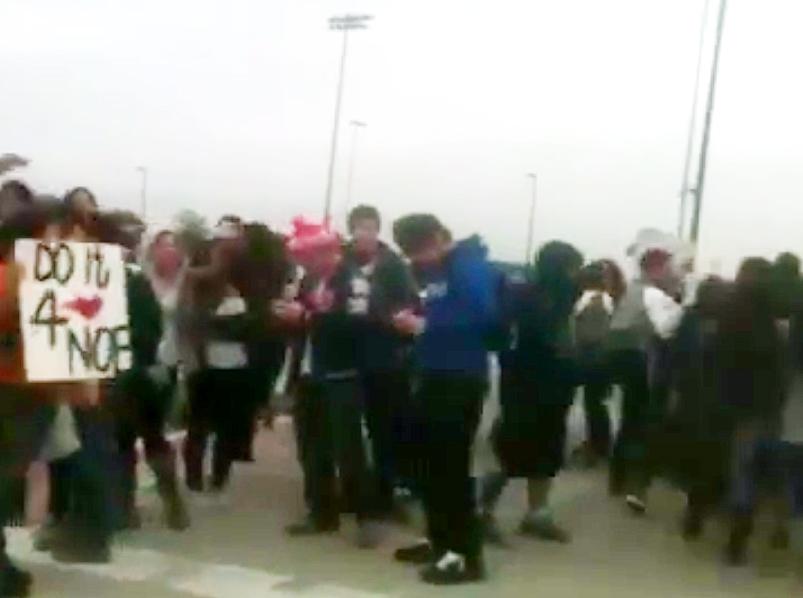Table of Contents
- Pepper Spray Incidents in Schools Escalate Alarming Trends
- Impact of Misuse on Student Safety and School Environment
- Legal and Disciplinary Challenges Facing Educational Institutions
- Strategies for Prevention and Responsible Use of Pepper Spray in Schools
- Insights and Conclusions
Pepper Spray Incidents in Schools Escalate Alarming Trends
Recent data reveals a troubling surge in the use of pepper spray within school environments, signaling a disturbing trend that is prompting urgent discussions among educators, parents, and policymakers. Incidents reported over the past year demonstrate not only an increase in the frequency of these events but also a rise in their severity, leading to heightened safety concerns and calls for better preventive measures. These episodes often disrupt the learning atmosphere and have serious implications for student well-being, underscoring the need for enhanced awareness and intervention strategies.
Schools are now confronting a complex challenge that extends beyond disciplinary issues, as the misuse of pepper spray introduces risks such as:
- Health complications for exposed students and staff, including respiratory distress and allergic reactions.
- Escalation of conflicts, where the presence of chemical irritants exacerbates tensions among peers.
- Increased security measures, which may include stricter search policies and surveillance, potentially affecting the overall school environment.
Impact of Misuse on Student Safety and School Environment
The alarming increase in the misuse of pepper spray within school premises has directly endangered student safety, creating an atmosphere of fear and uncertainty. Incidents involving the substance can lead to severe respiratory distress, eye injuries, and panic attacks among affected students and staff. Beyond the immediate physical harm, these episodes disrupt normal school activities and require urgent medical intervention, straining school resources and emergency response capabilities. Parents and educators are increasingly concerned about the long-term psychological impact on students, who may develop anxiety or trauma related to these events.
Moreover, the broader school environment suffers as trust deteriorates among students, teachers, and administrators. A once secure space for learning transforms into a setting marked by suspicion and heightened caution. Schools are faced with challenges such as:
- Implementing stricter surveillance and security policies
- Revising disciplinary protocols to handle misuse incidents effectively
- Facilitating increased counseling and support services for affected individuals
- Balancing safety measures without creating an oppressive atmosphere
These complications not only disrupt educational progress but also put pressure on institutional leadership to restore and maintain a safe, positive learning environment.
Legal and Disciplinary Challenges Facing Educational Institutions
Educational institutions are grappling with a surge in incidents involving the misuse of pepper spray by students, leading to a complex landscape of legal liabilities and disciplinary dilemmas. Schools must navigate state and federal regulations while ensuring the safety of all individuals on campus. Recent cases have sparked intense scrutiny over the adequacy of current policies, with legal experts warning that failure to enforce strict guidelines could result in significant lawsuits. Administrators are increasingly faced with the challenge of balancing punitive measures against restorative approaches, all while maintaining compliance with students’ rights and district mandates.
Key issues confronting schools include:
- The need for updated training programs for staff on handling chemical agents
- Clear protocols for reporting and investigating pepper spray incidents
- Ensuring disciplinary actions are consistent and transparent
- Addressing potential health risks and liability claims effectively
As districts respond to this troubling trend, collaboration between legal counsel, educators, and mental health professionals is critical to developing policies that deter misuse while fostering a safe learning environment free from fear and disruption.
Strategies for Prevention and Responsible Use of Pepper Spray in Schools
To effectively address the rising concerns around pepper spray misuse in educational environments, schools must implement comprehensive prevention programs that emphasize education, awareness, and strict accountability. Training sessions for students and staff can highlight the potential dangers, legal ramifications, and ethical considerations involved with carrying or using pepper spray on campus. Creating a culture of open communication encourages reporting of misuse and fosters a safer atmosphere for all. Additionally, involving parents and community stakeholders in awareness campaigns helps reinforce the message beyond school grounds, ensuring a united front against unauthorized use.
Establishing clear, consistently enforced policies regarding possession and use is crucial. Schools can incorporate confiscation measures, disciplinary actions, and security protocols such as routine bag checks in sensitive areas. Collaboration with local law enforcement ensures swift intervention when incidents arise, while behavioral counseling supports students who may be at higher risk of misuse. Integrating these strategies into the school’s safety framework balances responsible use education with preventive measures, ultimately aimed at reducing incidents without compromising student rights and safety.
- Educational workshops: Focus on risks and legal consequences.
- Parental involvement: Continuous communication channels.
- Strict policy enforcement: Clear rules, consistent penalties.
- Security enhancements: Random inspections and monitoring.
- Support systems: Counseling for behavioral intervention.
Insights and Conclusions
As incidents of pepper spray misuse in schools continue to rise nationwide, educators, parents, and policymakers are urged to collaborate on preventive measures and comprehensive safety protocols. Addressing this troubling trend requires a balanced approach that prioritizes student welfare while ensuring that disciplinary tools are used responsibly and appropriately. Ongoing monitoring and community engagement will be essential to curbing misuse and fostering a secure learning environment for all students.Check Our Other Blogs
- StunGun – Your Trusted Source for Stun Guns, Laws, and Self-Defense Tips
- PepperSprayLaws – Your Trusted Resource for Pepper Spray Information
- StunGunLaws – Your Trusted Guide to Stun Gun Legality and Safety




